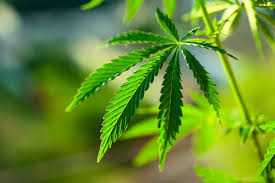DỊCH HOÀN THIỆN ĐỀ THI IELTS READING VÀ GIẢI THÍCH ĐÁP ÁN:
Making Every Drop Count
A
The history of human civilization is entwined with the history of ways we have learned to manipulate water resources. As towns gradually expanded, water was brought from increasingly remote sources, leading to sophisticated engineering efforts such as dams and aqueducts. At the height of the Roman Empire, nine major systems, with an innovative layout of pipes and well-built sewers, supplied the occupants of Rome with as much water per person as is provided in many parts of the industrial world today.
Lịch sử của nền văn minh nhân loại gắn liền với lịch sử các phương pháp sử dụng tài nguyên nước mà chúng ta đã tìm hiểu. Khi các thị trấn dần dần mở rộng, nước được đưa đến từ các nguồn ngày càng xa, dẫn đến những thành tựu kỹ thuật phức tạp như đập và cống dẫn nước. Vào thời kỳ đỉnh cao của Đế chế La Mã, chín hệ thống chính, với cách bố trí đường ống sáng tạo và hệ thống cống rãnh được xây dựng chắc chắn, đã cung cấp cho cư dân thành Rome lượng nước bình quân đầu người ngang với lượng nước được cung cấp ở nhiều nơi trong thế giới công nghiệp ngày nay.
B
During the industrial revolution and population explosion of the 19th and 20th centuries, the demand for water rose dramatically. Unprecedented construction of tens of thousands of monumental engineering projects designed to control floods, protect clean water supplies, and provide water for irrigation and hydropower brought great benefits to hundreds of millions of people. Food production has kept pace with soaring populations mainly because of the expansion of artificial irrigation system that makes possible the growth of 40% of the world's food. Nearly one-fifth of all the electricity generated worldwide is produced by turbines spun by the power of falling water.
Trong cuộc cách mạng công nghiệp và bùng nổ dân số của thế kỷ 19 và 20, nhu cầu về nước tăng đột biến. Việc xây dựng chưa từng có hàng chục nghìn công trình kỹ thuật đồ sộ được thiết kế để kiểm soát lũ lụt, bảo vệ nguồn cung cấp nước sạch, cung cấp nước cho thủy lợi và thủy điện đã mang lại lợi ích to lớn cho hàng trăm triệu người. Sản xuất lương thực đã theo kịp tốc độ tăng dân số chủ yếu là do việc mở rộng hệ thống thủy lợi nhân tạo giúp tăng trưởng 40% lương thực của thế giới. Gần 1/5 tổng lượng điện được tạo ra trên toàn thế giới được sản xuất bởi các tua-bin quay nhờ sức của nước chảy xuống.
C
Yet there is a dark side to this picture: despite our progress, half of the world's population till suffers, with water services inferior to those available to the ancient Greeks and Romans. As the United Nations report on access to water reiterated in November 2001, more than one billion people lack access to clean drinking water: some two and half billion do not have adequate sanitation services. Preventable water-related diseases kill an estimated 10,000 to 20,000 children every day, and the latest evidence suggests that we are falling behind in efforts to solve their problems.
Tuy nhiên, có một mặt tối trong bức tranh này: bất chấp sự tiến bộ của chúng ta, một nửa dân số thế giới vẫn bị ảnh hưởng, với dịch vụ nước kém hơn so với dịch vụ nước của người Hy Lạp và La Mã cổ đại. Như báo cáo của Liên hợp quốc về khả năng tiếp cận nước được nhắc lại vào tháng 11 năm 2001, hơn một tỷ người không được tiếp cận với nước uống sạch: khoảng hai tỷ rưỡi người không có các dịch vụ vệ sinh đầy đủ. Các bệnh liên quan đến nước có thể phòng ngừa được ước tính giết chết khoảng 10.000 đến 20.000 trẻ em mỗi ngày và bằng chứng mới nhất cho thấy chúng ta đang tụt lại phía sau trong nỗ lực giải quyết các vấn đề của chúng.
D
The consequences of our water policies extend beyond jeopardizing human health. Tens of millions of people have been forced to move from their homes - often with little warning or compensation - to make way for the reservoirs behind dams. More than 20% of all freshwater fish species are now threatened or endangered because dams and water withdrawals have destroyed the free-flowing river ecosystems where they thrive. Certain irrigation practices degrade soil quality and reduce agricultural productivity. Groundwater aquifers* are being pumped down faster than they are naturally replenished in part of India, China, the USA and elsewhere. And disputes over shared water resources have led to violence and continue to raise local, national and even international tensions.

1. Mua bộ đề gần 400 bài ielts reading - Dịch và giải chi tiết Chỉ 199k bao gồm toàn bộ đề trong bộ Cambridge ( từ bộ 1 -19) và nhiều đề thi thực tế ( xem danh sách 400 đề ielts reading tại đây). Xem bài mẫu tại đây, Bài mẫu 1, bài mẫu 2, bài mẫu 3. Giải đề bao gồm phần dịch bài đọc, dịch phần câu hỏi, giải thích chi tiết, ( chỉ có thể tải, in phần đề để luyện tập, phần giải chi tiết và dịch chỉ xem online).
>>>>> Đặc biệt tặng kèm Dịch và giải chi tiết bộ đề Ielts listening từ Cam 10-18 và tặng kèm hơn 300 đề Ielts thực tế ( không có lời giải chi tiết chỉ có đề và đáp án) ( khác với bộ 400 đề ở trên). Vui lòng điền thông tin theo form tại đây và thanh toán theo thông tin CK trong form.
2. Đặc biệt dành tặng 100 bạn hoàn thành buổi học thử miễn phí khóa học Ielts Speaking online 1 kèm 1, các bạn sẽ được tặng bộ đề 400k bài Ielts reading và bộ đề Ielts Listening bộ Cam từ 10-18 gồm bài dịch và giải chi tiết, giải thích từ vựng khó ( thời hạn sử dụng trong vòng 2 tháng). Xem thông tin khóa học Ielts Speaking online 1 kèm 1 và đăng ký học thử tại đây.
E
At the outset of the new millennium, however, the way resource planners think about water is beginning to change. The focus is slowly shifting back to the provision of basic human and environmental needs as a top priority - ensuring 'some for all,' instead of 'more for some'. Some water experts are now demanding that existing infrastructure be used in smarter ways rather than building new facilities, which is increasingly considered the option of last, not first, resort. This shift in philosophy has not been universally accepted, and it comes with strong opposition from some established water organizations. Nevertheless, it may be the only way to address successfully the pressing problems of providing everyone with clean water to drink, adequate water to grow food and a life free from preventable water-related illness.
F
Fortunately - and unexpectedly - the demand for water is not rising as rapidly as some predicted. As a result, the pressure to build now water infrastructures has diminished over the past two decades. Although population, industrial output and economic productivity have continued to soar in developed nations, the rate at which people withdraw water from aquifers, rivers and lakes has slowed. And in a few parts of the world, demand has actually fallen.
G
What explains this remarkable turn of events? Two factors: people have figured out how to use water more efficiently, and communities are rethinking their priorities for water use. Throughout the first three-quarters of the 20th century, the quantity of freshwater consumed per person doubled on average; in the USA, water withdrawals increased tenfold while the population quadrupled. But since 1980, the amount of water consumed per person has actually decreased, thanks to a range of new technologies that help to conserve water in homes and industry. In 1965, for instance, Japan used approximately 13 million gallons* of water to produce $1 million of commercial output; by 1989 this had dropped to 3.5 million gallons (even accounting for inflation) - almost a quadrupling of water productivity. In the USA, water withdrawals have fallen by more than 20% from their peak in 1980.
H
On the other hand, dams, aqueducts and other kinds of infrastructure will still have to be built, particularly in developing countries where basic human needs have not been met. But such projects must be built to higher specifications and with more accountability to local people and their environment than in the past. And even in regions where new projects seem warranted, we must find ways to meet demands with fewer resources, respecting ecological criteria and to smaller budget.
>>>>> Xem thêm:
♦ Tổng hợp câu trả lời, câu hỏi, từ vựng của hơn 70 chủ đề Ielts Speaking part 1
♦ Tổng hợp gần 400 đề thi Ielts reading ( bao gồm dịch, giải chi tiết, từ vựng)
Questions 14-20
Reading Passage has seven paragraphs, A-H.
Choose the correct heading for paragraphs A and C-H from the list of headings below.
Write the correct number, i-xi, in boxes 1-7 on your answer sheet.
14. Paragraph A
Example Answer
Paragraph B iii
15. Paragraph C
16. Paragraph D
17. Paragraph E
18. Paragraph F
19. Paragraph G
20. Paragraph H
List of Headings
i Scientists’ call for a revision of policy
ii An explanation for reduced water use
iii How a global challenge was met
iv Irrigation systems fall into disuse
v Environmental effects
vi The financial cost of recent technological improvements
vii The relevance to health
viii Addressing the concern over increasing populations
ix A surprising downward trend in demand for water
x The need to raise standards
xi A description of ancient water supplies
Question 21-26
Do the following statement agree with the information given in Reading Passage 65:
In boxes 21-26 on your answer sheet, write
YES if the statement agrees with the claims of the writer
NO if the statement contradicts the claims of the writer
NOT GIVEN if it is impossible to say what the writer thinks about this
21 Water use per person is higher in the industrial world than it was in Ancient Rome.
22 Feeding increasing populations is possible due primarily to improved irrigation systems
23 Modern water systems imitate those of the ancient Greeks and Romans.
24 Industrial growth is increasing the overall demand for water.
25 Modern technologies have led to reduction in the domestic water consumption.
26 In the future, governments should maintain ownership of water infrastructures.
ĐÁP ÁN, GIẢI CHI TIẾT và DỊCH HOÀN THIỆN ĐỀ THI IELTS READING:
Making Every Drop Count
Questions 14-20
Reading Passage has seven paragraphs, A-H.
Choose the correct heading for paragraphs A and C-H from the list of headings below.
Write the correct number, i-xi, in boxes 1-7 on your answer sheet.
Example Answer Paragraph B iii
14. Paragraph A/ xi A description of ancient water supplies
Giải thích:
As towns gradually expanded, water was brought from increasingly remote sources, leading to sophisticated engineering efforts such as dams and aqueducts. At the height of the Roman Empire, nine major systems, with an innovative layout of pipes and well-built sewers, supplied the occupants of Rome with as much water per person as is provided in many parts of the industrial world today.
15. Paragraph C/ vii The relevance to health
Giải thích:
Preventable water-related diseases kill an estimated 10,000 to 20,000 children every day, and the latest evidence suggests that we are falling behind in efforts to solve their problems.
Question 21-26
Do the following statement agree with the information given in Reading Passage 65:
In boxes 21-26 on your answer sheet, write
YES if the statement agrees with the claims of the writer
NO if the statement contradicts the claims of the writer
NOT GIVEN if it is impossible to say what the writer thinks about this
21.F Water use per person is higher in the industrial world than it was in Ancient Rome.
Mức sử dụng nước trên mỗi người trong thế giới công nghiệp cao hơn so với thời La Mã cổ đại.
Giải thích: đoạn 1
At the height of the Roman Empire, nine major systems, with an innovative layout of pipes and well-built sewers, supplied the occupants of Rome with as much water per person as is provided in many parts of the industrial world today.
22.T Feeding increasing populations is possible due primarily to improved irrigation systems
Có thể cung cấp thực phẩm cho dân số ngày càng tăng chủ yếu nhờ hệ thống thủy lợi được cải thiện
Giải thích: đoạn B
Food production has kept pace with soaring populations mainly because of the expansion of artificial irrigation system that makes possible the growth of 40% of the world's food
23.NG Modern water systems imitate those of the ancient Greeks and Romans.
Hệ thống nước hiện đại bắt chước hệ thống nước của người Hy Lạp và La Mã cổ đại.
Giải thích: không có thông tin
Answer:
14 xi
15 vii
16 v
17 i
18 ix
19 ii
20 x
21 NO
22 YES
23 NOT GIVEN
24 NO
25 YES
26 NOT GIVEN
1. Mua bộ đề gần 400 bài ielts reading - Dịch và giải chi tiết Chỉ 199k bao gồm toàn bộ đề trong bộ Cambridge ( từ bộ 1 -19) và nhiều đề thi thực tế ( xem danh sách 400 đề ielts reading tại đây). Xem bài mẫu tại đây, Bài mẫu 1, bài mẫu 2, bài mẫu 3. Giải đề bao gồm phần dịch bài đọc, dịch phần câu hỏi, giải thích chi tiết, ( chỉ có thể tải, in phần đề để luyện tập, phần giải chi tiết và dịch chỉ xem online).
>>>>> Đặc biệt tặng kèm Dịch và giải chi tiết bộ đề Ielts listening từ Cam 10-18 và tặng kèm hơn 300 đề Ielts thực tế ( không có lời giải chi tiết chỉ có đề và đáp án) ( khác với bộ 400 đề ở trên). Vui lòng điền thông tin theo form tại đây và thanh toán theo thông tin CK trong form.
2. Đặc biệt dành tặng 100 bạn hoàn thành buổi học thử miễn phí khóa học Ielts Speaking online 1 kèm 1, các bạn sẽ được tặng bộ đề 400k bài Ielts reading và bộ đề Ielts Listening bộ Cam từ 10-18 gồm bài dịch và giải chi tiết, giải thích từ vựng khó ( thời hạn sử dụng trong vòng 2 tháng). Xem thông tin khóa học Ielts Speaking online 1 kèm 1 và đăng ký học thử tại đây.

.png)

.jpg)




